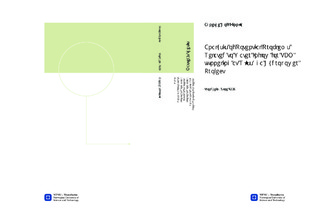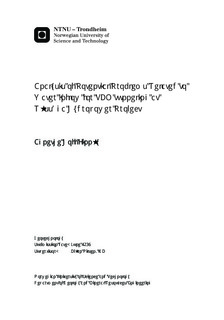| dc.description.abstract | The new headrace tunnel at the water power station at Røssåga will be constructed with TBM and the project will thereby have Norway´s first TBM-tunnel since 1993. The tunnel is located in Nordland with a lot of calcareous rock types and the risk of encountering karst and water inflow is therefore present. It has therefore been performed an engineering geological evaluation of the possible water problems in the headrace tunnel. The analysis is based on a review of the possibility of meeting karst in the tunnel, review and discussion of experiences with former tunnel projects in karst areas for both international projects and projects from Nordland, and a review of the engineering geological conditions at Røssåga. Possible methods for detecting karst during pre-investigations and during construction have been discussed. Karst ground is very complex ground to investigate. The focus during pre-investigation should therefore be on providing enough information to be able to predict the ground conditions so appropriate planning for the tunnel construction can be done. Surface mapping of karst features and boreholes in critical sections can be possible methods for predicting karst at tunnel level. Since karst is difficult to predict before excavation it is important that investigation during construction is performed. Probe drilling during excavation is a possible method for detecting karst, but karst can be difficult to reveal also with this method. A review of the possibility of encountering karst has been performed. Karst can occur in almost all rock types that are calcareous. For the headrace tunnel this means that karst can occur in limestone, marble, calcareous skarn, mica schist and mica gneiss. Karst is observed in some places along the tunnel alignment and has occurred in tunnels in the same geological region, but from the information that is now available it is not possible to conclude with whether karst will occur or not in the tunnel. It is necessary to perform more investigations to give a more certain answer to this. What can be said for sure is that the possibility of karst in the area is present and some sections along the tunnel have higher probability of encountering karst than the others. This is taken into consideration in the prognosis. A prognosis has been performed for the possibility of encountering water inflow in the tunnel. The tunnel is divided into four sections and evaluated on a scale of: Very small, Small, Moderate, Large and Extremely Large possibility of encountering water inflow. The evaluation is done with respect to the possibility of encountering karst and the other engineering geological conditions that can lead to water inflow. One section with marble is evaluated to have Large possibility of water inflow and a section with mica schist is evaluated to Moderate possibility. The two last sections consist of different rock types and are evaluated to have Low and Low-Moderate possibility. The largest amount of water inflow is expected to be in relation to karst. The amount of water inflow that can occur if karst is encountered is very uncertain, but experiences indicate that extremely large water inflow can occur. Small to moderate water inflow along the tunnel alignment can occur though open joints and in weakness zones. Possible consequences of karst for the construction of the TBM-tunnel are discussed with respect to water inflow. An open TBM is used at Røssåga. The TBM can stand a lot of water and it is a water pump available. The most likely consequence for water inflow into the tunnel will be poor working conditions with muck and water spreading out in the working area. Water inflow can cause instable conditions and difficulty with installing rock support. An open TBM, which are used at Røssåga, is particular sensitive to these conditions because the machine does not have a shield and is open to the rock mass in the working area. Implementation of measures against water inflow is time consuming and will hamper the progress of the TBM. Measures against karst and water inflow can be probe drilling and implementing pre-injection if karst is detected. This is recommended as a method for stopping water inflow, also for TBM. In the TBM-tunnel at Røssåga only one probe hole will be drilled in the tunnel face at the time. The possibility of detecting karst with one probe hole is small. It is recommended that more investigations is performed to reveal critical sections with respect to karst and that more thorough probe drilling will be performed in these sections. In this way a good balance is maintained between progress of the tunnel and the investigations. Also more drill hammers can be installed, to be able to perform probe drilling more efficiently. Generally, it is important to have planned measures against all possible eventualities, and that the necessary equipment is available and staff with experience from similar conditions. | nb_NO |

